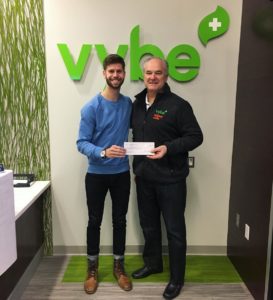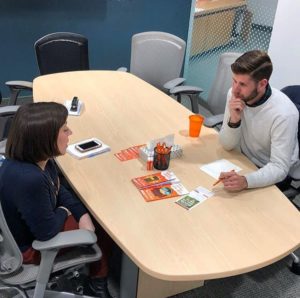Throughout the last 2.5 years, I’ve sat down and talked with a total of 1,759 individuals, 1:1, for 1 hour each as part of my goal to spend an hour with 10,000 different people (documented via Robs10kFriends).
Leaving behind careers in finance at Deloitte Consulting and tech sales at RJMetrics, I’ve made the bet that creating human connection is currently a more important foundation for my future than building my savings account. Here’s why:
Last week, after waking up and going to the gym, I returned home, turned on the TV and flipped on the TODAY Show. Immediately, almost serendipitously, I became focused on the story on air as the title read, “The Power of Friendship.” I had been meeting people 1:1 for the last 2.5 years (nearly 2 of those years full-time) to increase my familiarity with those around me so I grew eager to learn more, thinking that this may be an opportunity for me to contribute a bit about what I’ve learned through my journey.
As I soaked in anchor Kate Snow’s words, I learned that the TODAY show wanted to begin a 24 hour movement called #TogetherTODAY to combat America’s current “loneliness epidemic.”
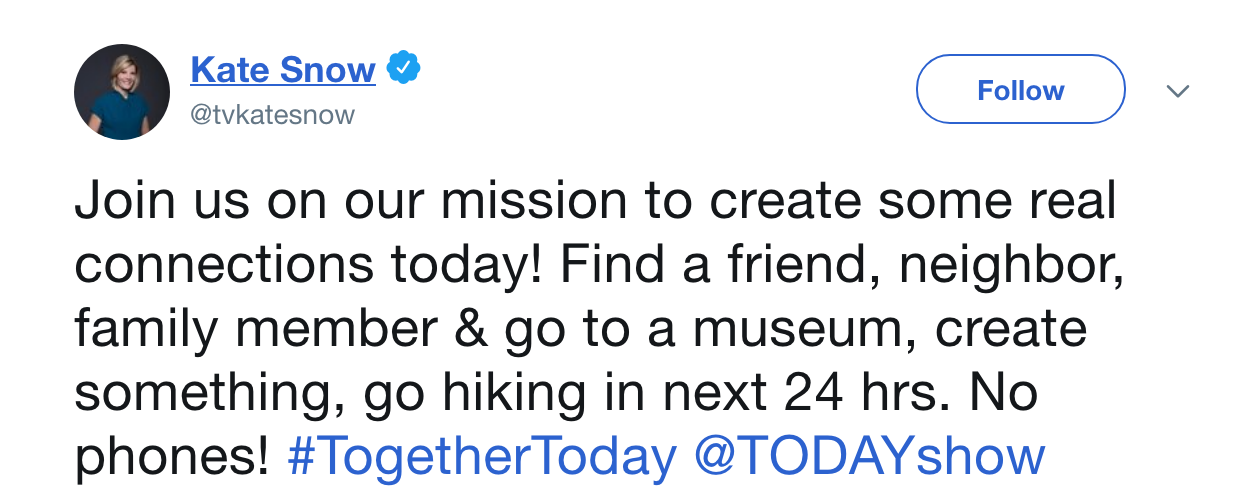
I also learned that this movement originated from Dr. Julianne HoltLundstad’s research on social connection in which she states, “Lacking social connection carries a risk that is comparable, and in many cases, exceeds that of other well-accepted risk factors, including smoking up to 15 cigarettes per day, obesity, physical inactivity, and air pollution.”
Diving further into the topic, I discovered that Vivek Murthy, the 19th Surgeon General of the United States, wrote his own piece on human connection, titled “Work and the Loneliness Epidemic.” In it, he argues for social connection to become a priority in the workplace, stating, “A more connected workforce is more likely to enjoy greater fulfillment, productivity, and engagement while being more protected against illness, disability, and burnout.”
He also goes on to suggest a few ideas of how to fix workplace loneliness, including building an understanding of high-quality relationships and creating opportunities to learn about your colleagues’ personal lives. While I agree with all of his points, I’ve found through my project that we can also take a more informal approach to fostering human connection potentially at earlier stages of our lives.
When I began my project, I simply intended to create a sense of community in my hometown of Philadelphia, PA while also forging my own entrepreneurial path in life. However, as I began talking with more and more people, I noticed that many people struggled with the notion of social anxiety, but felt comfortable discussing it in the safety of our 1:1 conversation (Jeremy Meyer#1750 turned to acting as an outlet for his anxiety). I also found that my idea of what a person’s life could look like expanded time and time again as I heard the stories of people’s lives who were incredibly different than mine (Tess Alexander #1729 spent 2 years living in an abandoned bank after running away from the foster care system at 14 years old).
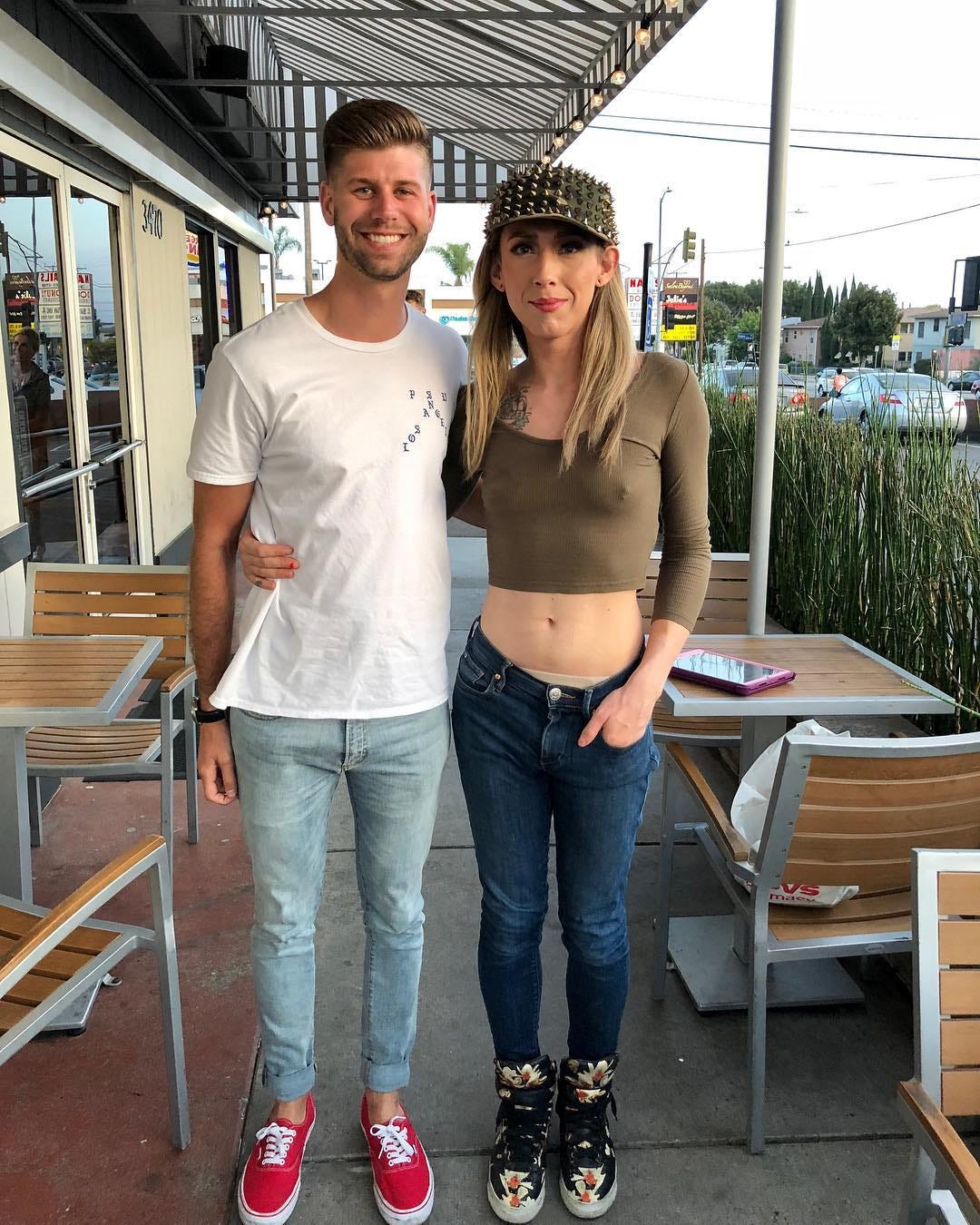
Reflecting back on how much of an impact my project has had on my life, I thought to myself, “Why am I only gaining this perspective at 27 years old?” and “How can I help create this opportunity for others?” I thought back to my college days at Penn State where I developed my love for meeting new people, imagined what type of class would allow me to foster these relationships and also began to question what true value looks like in the classroom.
I developed the idea, which I still plan to implement someday in the future, to create a freshman seminar in which students spend the class period sitting down with each other 1:1, followed by an assignment to write about what they’ve learned about their classmates’ lives (I believe this could also be applied to high school and office environments). I know it’s simple, but having done this exercise 1,759 times in my own life, I’ve gained an incredible amount of empathy for others, have widely expanded my perspective, have improved my conversational and interpersonal skills and have learned how to actively listen by being fully present for those in front of me.
By incorporating human connection into the classroom, we’d be giving students the opportunity to learn from each other rather than textbooks or Powerpoint slides while also giving them foundational relationships to be fostered over the next 4 or so years. Relationships that could play out in a number of valuable ways.
As I write these words right now, I’m sitting in the kitchen of my college roommate’s apartment (who has been kind enough to host me while I expand my project from Philadelphia to Los Angeles), thinking about how I never would have moved to LA if it weren’t for him. I think about my friends from college who pulled together money to help me cover a month of rent while I still lived in Philly. I think about the genuine happiness I receive by sharing space and time with them as I continue to grow older and think about how all of this value originated from our authentic connections as students at Penn State.
I then compare that with what I remember from my Iberian Civilization class at school and wonder, “Which of these has served me better throughout my life?” (I realize some college classes are truly valuable to success in certain fields, but think with the concept of general education courses that there’s room for both :)). My point being, by intentionally creating environments geared towards the focus of human connection, I think we’d casually allow students to solve or prevent issues of loneliness while providing the potential for future friendships, marriages, business partnerships, collaborations, etc. to occur.
One of my favorite examples of intentional connection preventing loneliness in my own life occurred about one month ago as I hit the road to meet a photographer located in Santa Monica for my project. While driving, I heard the car next to me beep as I changed my song selection of The Struts. Thinking I must have swerved, I refocused on the road ahead before hearing another beep. I looked over my shoulder to the left and saw Erin Lichman #1330 who I had donated blood with in Philly as part of my project back in October. Excited to see her, I tried to message her once I parked, but found that she was no longer on Instagram. When I returned to my car after my meeting, though, I opened what I thought to be a parking ticket which actually turned out to be a note.
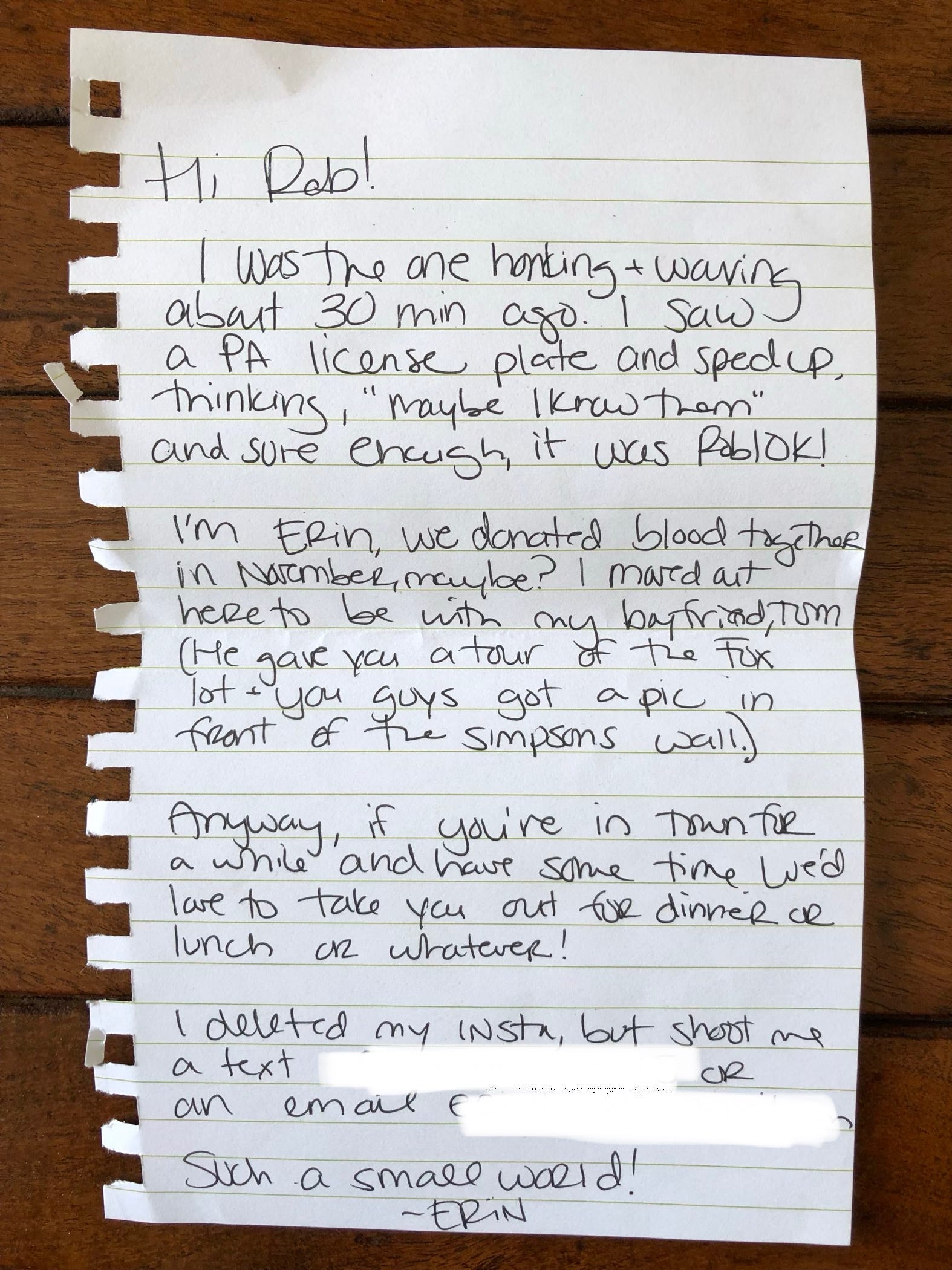
I’ve since then run into Erin again in a different part of LA and have both times experienced the comfort of feeling like I was at home despite the fact that I’m living in an entirely new city.
My own small victories aside, I’m excited to see what the future of human connection holds as I’ve already seen it grow in a very small way through people beginning their own versions of my project and through those who’ve already sought to recreate projects like Humans of New York. In my experience specifically, I’ve met David Grzybowski #1266 who met 100 new people during his time in Raleigh, NC, Xandra Robinson-Burns #1679 who is currently meeting 100 new people in Edinburgh, Scotland, and Ciara Cihak #1686 who is currently turning strangers into friends in Reno, NV.
If we as a society are going to combat an epidemic of loneliness, I believe we need to feel comfortable in beginning to speak to each other again without the agendas of business, dating, etc. Going through the journey myself and witnessing others find joy in their own journeys gives me hope that it could eventually become trendy to expand our comfort zones by sitting down with new people. By seeing others take the leap and find value in their intentional connections, we may feel the confidence and permission to do so on our own as well. After all, we’ve seen crazier trends — eating Tide Pods — catch on, right??
Thanks for reading and good luck meeting people!
Rob
